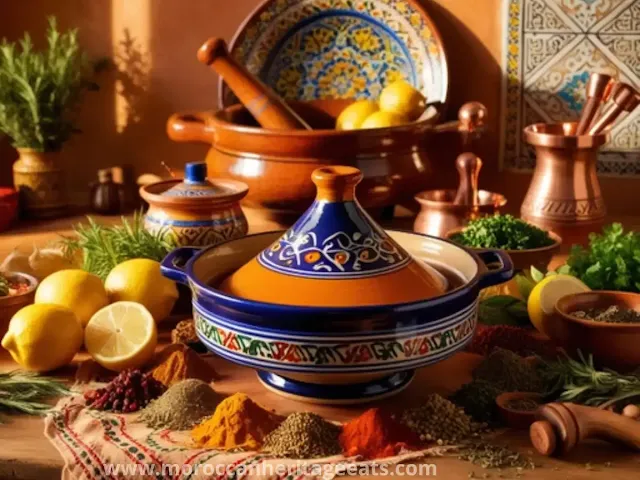Beyond the Tagine: Exploring Moroccan Food Culture
 |
| Exploring Moroccan Food Culture |
A Feast for the Senses
Morocco’s food culture reflects its unique position at the crossroads of Africa, Europe, and the Middle East. Its dishes are a harmonious blend of Berber traditions, Arab influences, and the subtle touch of Mediterranean flavors. Spices like saffron, cumin, and cinnamon are not mere seasonings but integral to crafting the layers of flavor that define Moroccan cooking.This complexity isn't limited to fine dining or family meals; it extends to the streets, where the soul of Moroccan cuisine truly comes alive.
The Vibrancy of Moroccan Street Eats
Strolling through a Moroccan medina, you’ll be captivated by the sight, sound, and smell of bustling food stalls. Street food in Morocco is a sensory journey and an essential part of the culture.- Sfenj: Often called the “Moroccan doughnut,” sfenj is a deep-fried delight sold by vendors on street corners. Crispy on the outside and airy inside, it’s best enjoyed hot and dipped in sugar or honey.
- Maakouda: These fried potato patties, seasoned with garlic and spices, are perfect for a quick snack. You’ll often find locals eating them sandwiched in bread or with a generous drizzle of harissa sauce.
- Grilled Sardines**: With Morocco being a major exporter of sardines, it’s no surprise this dish is a street food staple. Freshly caught sardines are marinated in chermoula—a zesty blend of parsley, cilantro, garlic, and lemon—before being grilled to perfection.
Food as a Cultural Identity
In Morocco, food is more than sustenance; it’s a way of life. Every dish tells a story of migration, trade, and the blending of cultures over centuries. For example:- Tagine, while globally recognized, is more than just a dish—it’s a symbol of Moroccan hospitality. Each family has its own version, from lamb with prunes to chicken with preserved lemons and olives.
- Couscous traditionally served on Fridays, represents unity and abundance. It's prepared with fluffy semolina, vegetables, and a hearty meat or chickpea stew, often shared in a large communal dish.
Meals in Morocco are social events, often lasting for hours. Guests are warmly welcomed with mint tea—a national symbol of hospitality—and an array of appetizers, from zaalouk (eggplant salad) to briouats (savory pastries).
Classic Recipes: Timeless Culinary Art
Beyond street eats, Moroccan cuisine boasts a repertoire of classic recipes that have stood the test of time. These dishes, often reserved for special occasions, showcase the artistry and labor involved in Moroccan cooking.- Pastilla: This sweet-and-savory pie, traditionally made with pigeon, is a showstopper. Layers of flaky phyllo dough are filled with spiced meat, almonds, and eggs, then dusted with powdered sugar and cinnamon. It’s a dish that embodies Morocco’s knack for balancing contrasting flavors.
- .Harira: A comforting tomato-based soup enriched with lentils, chickpeas, and vermicelli, harira is a Ramadan favorite but enjoyed year-round. Often paired with chebakia (sesame cookies), it’s a heartwarming meal that brings families together.
- M’semen: These flaky, pan-fried square pancakes are versatile enough to be served with honey for breakfast or stuffed with savory fillings for a snack.
A Culinary Journey Across Regions
Morocco’s diverse geography influences its culinary landscape. Coastal cities like Essaouira and Agadir highlight fresh seafood dishes, while the Atlas Mountains bring robust flavors with hearty stews and breads like khobz. The Saharan region, with its arid climate, offers unique delicacies like medfouna, a stuffed flatbread often called “Berber pizza.”Even the spices vary across regions. While Marrakech leans into bold, aromatic blends, Fes is known for its refined use of ingredients like orange blossom and rosewater.
The Global Appeal of Moroccan Cuisine
In recent years, Moroccan food has gained global acclaim, finding its way into kitchens and restaurants worldwide. Cooking classes in cities like Marrakech and Casablanca attract food enthusiasts eager to master the art of crafting a tagine or rolling couscous by hand.Yet, despite its global popularity, Moroccan cuisine remains deeply rooted in tradition. The techniques, passed down from mother to daughter, and the use of local ingredients ensure authenticity.
Preserving Heritage Through Food
In an era of fast food and globalization, Morocco stands out as a country that cherishes its culinary heritage. Efforts to document traditional recipes and promote Moroccan cuisine on international platforms are ensuring that the younger generation appreciates the richness of their culinary identity.Conclusion
Moroccan food culture is an intricate blend of flavors, history, and community. From the tantalizing street eats that enliven medinas to the classic recipes that celebrate tradition, every bite is a journey into the soul of Morocco. Beyond the tagine lies a culinary world waiting to be explored—a world where food is a bridge between past and present, between people and their heritage.So, the next time you savor Moroccan cuisine, take a moment to appreciate not just the flavors but the stories they tell. Whether you’re biting into a freshly made sfenj or sharing a bowl of couscous with friends, you’re experiencing a piece of Morocco’s rich cultural tapestry.

